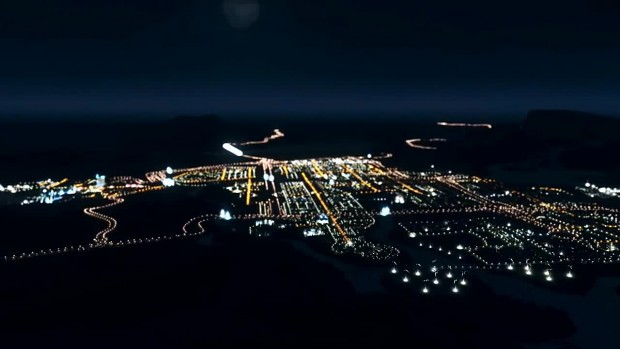They Mostly Come Out At Night – Cities: Skylines After Dark Review
Written by: Adam "ManKorn" Korenman, CC2K Video Games Editor
There weren’t many complaints when the original Skylines hit the digital marketplace. After the rage-filled launch of EA’s SimCity, gamers were clamoring for a title that gave them the freedom to grow. The Maxis title felt compressed, almost frustratingly constricted at times. Cities allowed for massive metropolises, with room to try out every district type and still have land to spare for sheer aesthetics.

Sure, there was no day/night cycle, and the cities didn’t possess much “life,” but it was an incredibly refreshing experience for all who bought in.
After Dark takes all the good and adds in some great. As the name implies, the city builder now employs a day/night cycle. It is not just window dressing, though. Things change at night, and the player needs to be flexible in dealing with this new challenge. Some of it is obvious. Solar Power Plants, formerly a mainstay of Cities best layouts, only work during the day (it is sad that they don’t store energy for later). Traffic dies down at night, and you can schedule certain services to be more active at one point in the day or another. Other areas are affected by the sun’s absence as well. Leisure activities, as promoted by the new leisure and tourism districts, boom during the twilight hours. Unfortunately, so does crime. Luckily, you have some new methods of dealing with that.

Police stations can still arrest criminals, but now they can transport them to prisons as well. Here, criminals are rehabilitated, freeing up the rest of the police force to continue patrolling. Bus lanes and bike lanes add new options to roads and mass transit, and the new bus terminal allows passengers to switch lines in station. There’s even an international airport to open up your city to a large amount of tourists.
Night hours look absolutely gorgeous. Streetlights flicker on as the sun sets, bathing the busy streets in a warm glow. Buildings throw on their own exterior lights, and some can be downright fancy as they try to attract the night crowd. From far above, the view is breathtaking and realistic. And each district is appropriately shiny. Residential streets have a muted glow, allowing citizens to safely walk to parks or take their dogs for a run. Commercial areas throw up some neon and let you know exactly what they’re selling (although the generic name generator for these buildings still leaves much to be desired), and industrial areas lay out plain white light so work can continue into the twilight hours.

The purple pollution is gone, and industrial areas now kick out a visually striking smog that really hammers home the point of trying for clean production. It isn’t as in depth as SimCity’s air pollution index, but it let’s you know that some areas are just not right for housing.
A few new buildings join the already long list of monuments and landmarks. Some, like the new additions for leisure and tourism, add sprite-based animations that bring them to life. Unfortunately, these are just animations, and are not generated by your actual citizens as in the Maxis games. In fact, that may be the only negative about the series as a whole. The buildings in SimCity require actual sims to operate. Police stations don’t magically have officers. They are hired from aspiring heroes in your town. Power plants don’t operate if there aren’t educated sims to run the machines. And each of those buildings can be added on to improve performance, or to unlock specific ability.

In contrast, the services in After Dark are a numbers game. If you plop enough fire houses, your city is considered covered. There isn’t a difference between a small fire truck and a full ladder truck. You don’t get access to helicopters. Prisoners don’t stage breakouts from the prison. In essence, there are no stories told in your city unless you dream them up yourself.
The other caveat is the consistent repetition of buildings. When I first started my new city, an entire block of houses selected the same design. You can, of course, download from the thousands of user-generated houses to increase the variety, but the vanilla package will sometimes pull you from the moment.

It is a small concession to an otherwise amazing expansion. And, let’s never forget, EA had a team of 95 men and women working to develop the next-gen simulator. Colossal Order made an arguably better product with 13. And, if this latest add-on is any indicator, they are listening to their fans and working hard to make their game even better. You can’t ask for a better developer-player relationship.
At the end of the day, the city-builder is all about watching your sims live and thrive in your city. While After Dark may not have the polish and depth of its predecessor, is makes up for that by the sheer flexibility of the interface. We’ve dumped hundreds of hours into the original game, and intend to lose ourselves even more with this expansion.
Cities: Skylines – After Dark
8.5 / 10
